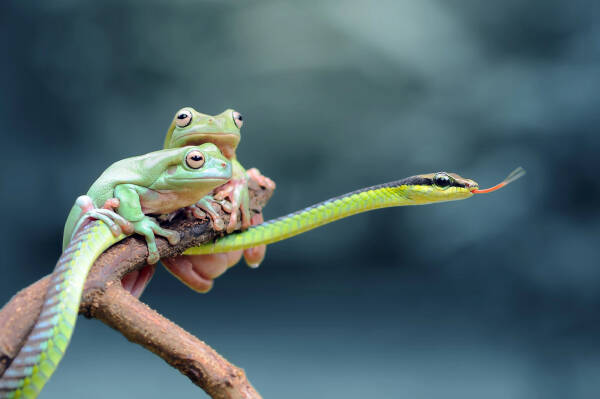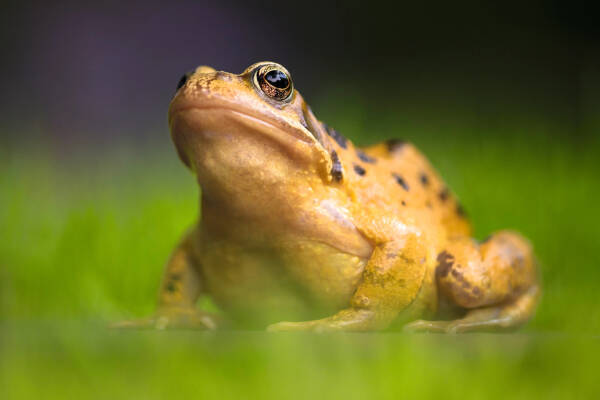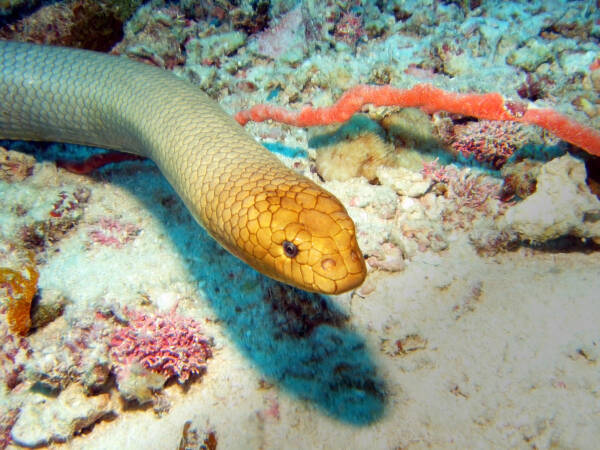Many people confuse amphibians and reptiles, or lump them together. But while they have some similarities, they also have more significant differences, as our expert guide explains. Individuals from each group may look very similar, such as salamanders and lizards, but there are actually many more differences than people realize. Most people think the difference lies in an aquatic lifestyle, but the differences between amphibians and reptiles go much further than that.
Trivia: Did you know?
Australia is the country with the most reptile species, with 1,078 different species. The United States ranks eighth with 530 species, my country ranks tenth with 490 species, and the United Kingdom is near the bottom with only 6 species of native reptiles.

1. Are amphibians and reptiles similar?
The main characteristics that amphibians and reptiles have in common is that they are both vertebrates (animals with an endoskeleton) and both are "cold-blooded" or cold-blooded. Many people believe that amphibians and reptiles look very similar because they both lack the fur that most mammals have, or feathers like birds.
They behave similarly in the wild, as they need to bask in warm, sunny areas to warm their bodies, and in many areas both groups hibernate over the winter. This makes them distinct from other vertebrates. Both groups share similar habitats across the UK - they are often found basking in the sun under or on rocks, logs or other sheltered environments.
All these factors led to their being grouped under the term "reptiles" and the study of amphibians and reptiles is called herpetology. While there are some clear differences between amphibians and reptiles, they are often used interchangeably in the media, which can add to confusion about the two groups.

2. Why are frogs and toads not reptiles?
Frogs and toads are amphibians, and more specifically, a branch of the amphibian evolutionary tree called amphibians. They are separated from the modern reptile branch of the evolutionary tree - the "squamates" - by about a million years of evolution.
From anatomy to behavior and developmental cycles, there are some distinct differences between amphibians and reptiles.
Trivia: Did you know?
The world’s smallest reptile is only as small as a sunflower seed.
The world's largest reptiles include the reticulated python (Python reticulatus) and the saltwater crocodile.
The largest amphibian is the Far Eastern giant salamander – but which one is king?
The smallest amphibian - and also the smallest frog - is Paedophryne amauensis
3. What is the difference between reptiles and amphibians?
One of the most obvious differences between amphibians and reptiles is the difference in skin. Reptiles are covered in tough horny scales to protect them, while amphibians have soft, absorbent skin that needs to be kept moist.
When amphibians (especially salamanders) are on land, their skin appears soft, which can cause them to be confused with reptiles. Amphibian skin is a very interesting adaptation because it is very porous and allows gas exchange - they can "breathe" through it. Amphibians and reptiles both shed or "shed" their skin.
Another factor that really shows the difference between reptiles and amphibians is their development. Reptiles have several methods of producing offspring.
While some reptiles lay eggs, others, like vipers, "give birth" to their young after they hatch inside their bodies.
Amphibians lay eggs or eggs in water, hatch into aquatic larvae or tadpoles, and then metamorphose into terrestrial larvae and eventually grow into mature adults.
Although adult amphibians are able to breathe air and live on land, they still must return to the water to reproduce, and their skin must be kept moist. Reptiles do not shapeshift and most spend their lives on land.
4. Do they exhibit different behaviors?
Because of amphibians' dual lives on land and underwater, they behave very differently from their scaly cousins. Therefore, amphibians (particularly frogs and toads) are more likely to be found basking in ponds or other freshwater habitats during spring and summer, while reptiles are most often found basking on dry surfaces such as rocks, logs, etc. or bare earth. ground.
Additionally, amphibians generally move more slowly than reptiles—if you disturb a basking snake or lizard, they will often crawl or jump much faster than a salamander or toad.
These behaviors are of course affected by temperature, and weather can have a large impact on the behavior of amphibians and reptiles. But overall, amphibians are better able to withstand cold temperatures than reptiles, and in the UK amphibian 'laying season' tends to precede the reptile breeding season. This means that amphibian activity begins to increase during the year (usually in late winter or early spring), while reptiles begin to appear in mid or late spring.
5. How are their habitats different?
Amphibian and reptile habitats vary widely around the world, and there is also a large degree of variation within each group. Generally speaking, in the UK, our native amphibians and reptiles inhabit similar areas. All of our native reptile species can be found in lowland heath, an increasingly rare habitat than tropical rainforest.
Amphibians need to keep their skin moist and must have access to fresh water, while many reptiles are not as closely associated with water, although there are exceptions such as grass snakes, which hunt aquatic prey in ponds and other freshwater habitats, and pythons, which love water. South American swamps – and, of course, sea snakes.

Trivia: Did you know?
Brazil has the largest number of amphibian species, with 1,022 species. my country ranks 5th with 461 species of amphibians, the United States ranks 12th with 313 species, and the United Kingdom has only 7 species of amphibians. But not in Greenland!
6. Are they dangerous?
Many amphibians and reptiles are at risk. The habitats they use are being degraded or lost entirely, putting these species at risk. Many of these threats will increase in the coming years. That’s why it’s important to protect healthy populations of amphibians and reptiles and the habitats they depend on, and to inspire more people to get involved in conservation efforts.
animal tags:
We created this article in conjunction with AI technology, then made sure it was fact-checked and edited by a Animals Top editor.